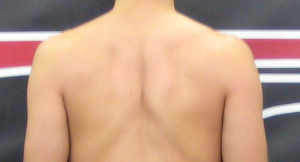
Random Thoughts on Sports Performance Training – Installment 26
It’s time for the January edition of Random Thoughts on Sports Performance Training. Before I get to it, though, just a friendly reminder that today is also the last day of the introductory $75 off sale on Cressey Sports Performance Innovations. Don’t miss out on this chance to get our popular resource at a great price using the coupon code APRIL2020. You can learn more HERE.
Since my presentation is “Scapular Control: Implications for Health and High Performance,” I thought I’d take an upper extremity approach to this month’s cues.
1. If you want to relax the neck, talk or exhale.
One of the biggest mistakes I see athletes make when they’re doing upper body work is aggressively recruiting the muscles surrounding the neck. In particular, we know that a hypertonic sternocleidomastoid (SCM) and scalenes can be implicated in not only neck pain, but also headaches and thoracic outlet syndrome.

In most cases, simply telling an athlete to relax or repositioning their head/neck will get the job done. However, another strategy you can employ is to have them exhale through the exertion phase, or simply talk during the set. Both the scalenes and SCM are accessory muscles of inhalation and this forces them to relax a bit so that you can build tension where you really want it.
2. When it comes to scapular control, nothing beats kinesthetic awareness coaching cues.
As I’ve written at length in the past, I’m a big believer in categorizing all athletes by their dominant learning styles: visual, kinesthetic, and auditory.
Visual learners can watch you demonstrate an exercise, and then go right to it.
Auditory learners can simply hear you say a cue, and then pick up the desired movement or position.
Kinesthetic learners seem to do best when they’re actually put in a position to appreciate what it feels like, and then they can crush it.
My experience with teaching scapular positioning has been that option #3 – actually putting someone in the position you want – is the quickest and easiest way to teach someone about scapular positioning. This is likely because:
a. The scapula is a unique bone with some unique movements (upward/downward rotation, anterior/posterior tilt) that aren’t familiar to most people
b. You’re always wearing a shirt when demonstrating drills, which makes it harder to see these subtle movements as they occur.
When in doubt, put a shoulder blade in the position you desire and then ask an individual to hold it and own it.
3. Uncontrolled end ranges are bad for the scapulothoracic joint, just like every other joint.
Here’s something to consider…
We know that if you repeatedly flex and extend the spine to its end-ranges, you’ll eventually wind up in trouble – whether it’s a herniated disc, stress fracture, or some other pathology.
We also know that if you repeatedly hyperextend an elbow, you’ll eventually wind up with loose bodies in the joint, early osteoarthritis, or a torn ulnar collateral ligament.
The point is that it’s important to have sufficient range of motion – and stability in that ROM – but not excessive ROM. Hanging out at any end range probably isn’t a good idea.
Interestingly, though, we overlook the fact that the scapulothoracic joint – the interaction of the shoulder blade with the rib cage – is subject to these rules. In particular, one issue that sometimes emerges is an excessive “military posture” of scapular adduction (toward the midline) and depression when folks are cued “down and back” without understanding what it really means.
These athletes often get neck/upper back flare-ups when they do a lot of deadlifting, carries, or even too much horizontal pulling. The shoulder blades are so far pulled back that it becomes a faulty stabilization strategy instead of a strong base from which to perform.
4. A PVC dowel is a super affordable way to do a lot of great things for your upper body work.
I was looking at a program I wrote for one of our pro guys yesterday, and realized that we used the PVC dowel for three different exercises in a single training day. That’s as much as barbells and dumbbells – but you can buy the piece of PVC for around $1. You won’t find a piece of training equipment that offers that kind of bang for your buck – and this realization made me think back to this video from a few years ago. These options are really just the tip of the iceberg, too:
Have a great Sunday – and don’t forget about the CSP Innovations sale that ends tonight! Just enter coupon code APRIL2020 at www.CSPInnovations.com.





